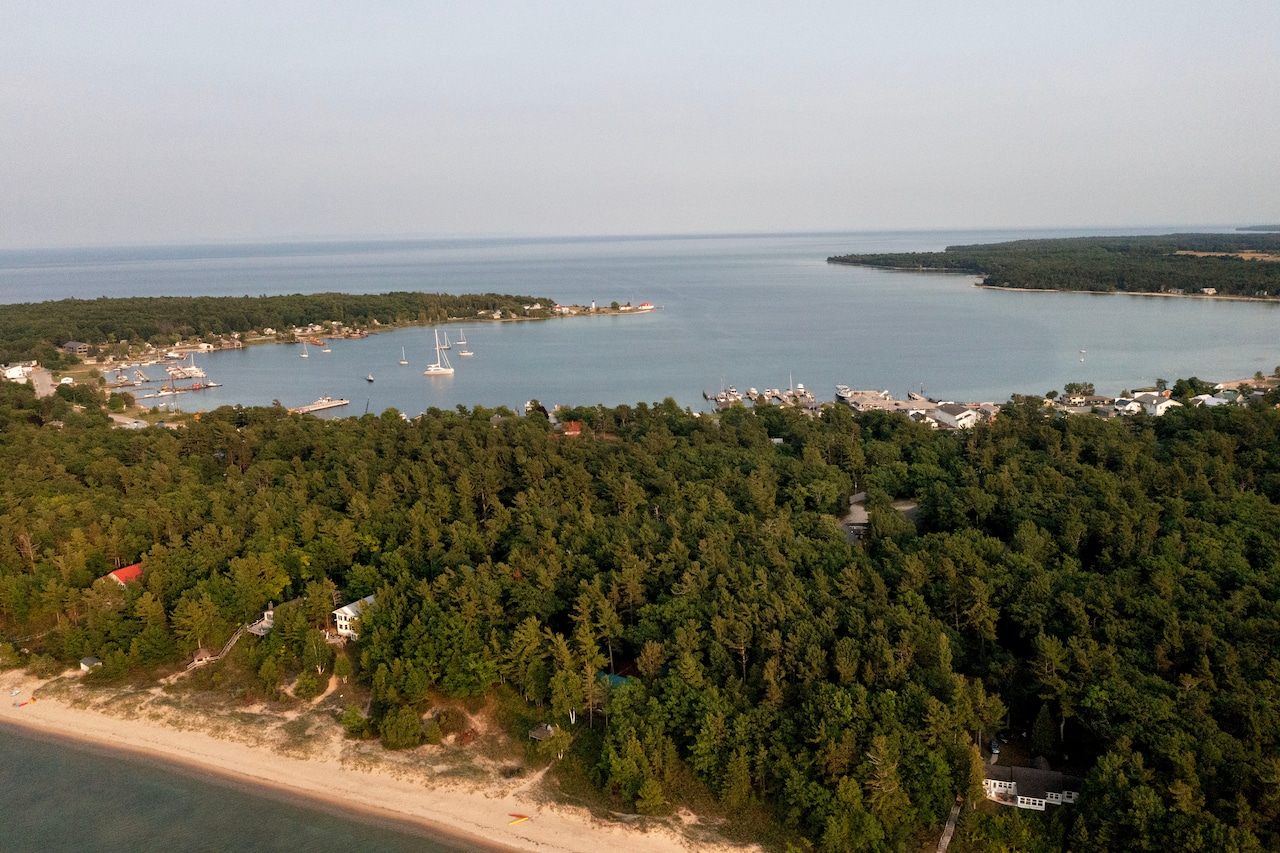
BEAVER ISLAND, MI – The Great Lakes are home to as many as 30 islands with year-round residents, including nine in Michigan alone.
Residents of more than a dozen Great Lakes islands from three states and Ontario gathered last week on Beaver Island in northern Lake Michigan to collectively strategize for their futures as part of an annual conference. Many Great Lakes islands depend on tourism, though there are other key industries found in the rural communities.
Attendees came from Manitoulin Island in Ontario, South Bass Island in Ohio, Madeline Island in Wisconsin, Harsens Island in Lake St. Clair, and Neebish Island in the Upper Peninsula’s St. Marys River, among others. They discussed ways to get mainlanders to better understand their unique needs as rural islands in Great Lakes waters.
Many of the inhabited Great Lakes islands have only hundreds or even dozens of full-time residents, though Manitoulin Island in Ontario is home to about 13,000 residents.
The islanders delved into both their communities’ individual and shared challenges, such as K-12 school enrollment, affordable housing availability, cultural event planning, economic growth, health and emergency services, and environmental sustainability.
Beaver Island Community School Principal Wil Cwikiel said he liked the idea of possibly doing teacher exchanges among island schools, and maybe even setting up a youth advisory council among Great Lakes islands.
Cwikiel suggested young islanders could meet virtually to discuss their future needs and what would make them feel comfortable about potentially returning to live in their rural island communities.
The four-day summit was hosted by the nonprofit Great Lakes Islands Alliance (GLIA) and its funding partners, with talks and events happening at the Beaver Island Community Center and the Central Michigan University Biological Station on the island.
Among the major projects featured during GLIA discussions was an islands resource directory designed for both island residents and prospective islanders. The concept highlights both tourism opportunities for visitors and support for the year-round and seasonal residents who call these islands home
The alliance may also create a type of passport program to encourage visitors who travel to Great Lakes islands to explore these rural communities beyond tourist attractions.
Philip Rice, GLIA communications specialist, who lives on Mackinac Island in Lake Huron, said the purpose of the passport is not to drive tourism. Instead, it’s to advocate for islands and provide information to people who know nothing about them, he said.
“We also wanted to encourage people to have an experience, not just put their feet on the island and look around and leave, but to actually do something meaningful,” Rice said.
Related: Beaver Island is a pristine environmental haven. Will it last?
He shared a prototype of a possible passport book entry for Mackinac Island, which even includes the frequently asked question, “People really live here?”
Beaver Island resident Angel Welke said she likes the ideas of a directory of Great Lakes islands and developing a passport-style visitors program.
“This is part of what we need to do to get all of these islands recognized in one spot. Yes, there are all of these inhabited islands, and we really are out here in the water – and come visit us,” Welke said Sept. 23 during the summit.
Welke also encouraged island communities to develop strategic plans to prioritize their goals and start working on them one by one. She also advised island communities to create a single calendar to avoid special events and local gatherings being scheduled at the same time.
Other Great Lakes islands represented by residents at the summit include Kelleys Island in Ohio; Washington Island in Wisconsin; and Bois Blanc, Drummond, Les Cheneaux and Sugar islands in Michigan.
GLIA was founded in 2017 with a mission to encourage relationship building, information sharing, and leveraging resources to address the shared challenges among Great Lakes islands.



